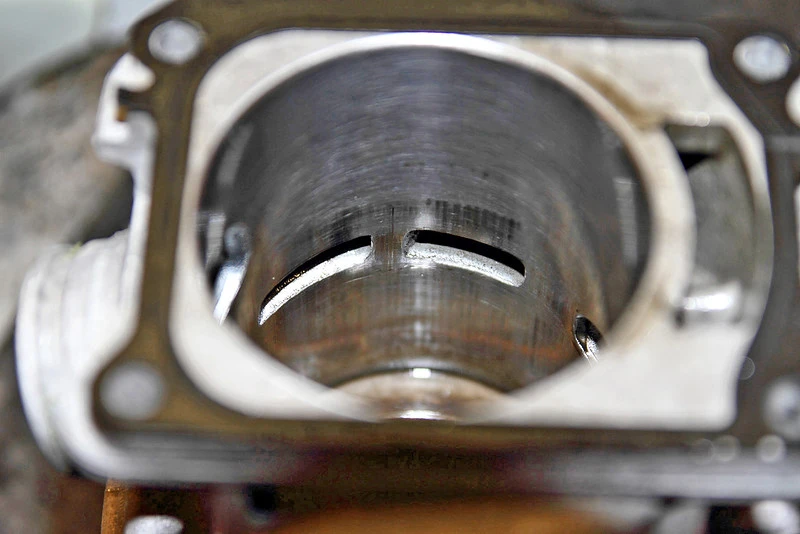What is a chainsaw Porting? A “ported” chainsaw refers to a chainsaw that has had its internal combustion engine modified by adding one or more ports, or openings, in the cylinder wall.
These ports allow for the intake and exhaust of fuel and air, which can affect the performance of the chainsaw. Porting is often done to increase the power and speed of the chainsaw, but it can also be used to modify the chainsaw’s torque or fuel efficiency.
It’s important to note that modifying a chainsaw in this way can potentially void the manufacturer’s warranty and may not be safe if not done properly.
Contents
Is Porting a Chainsaw Worth It?
It’s difficult to say whether porting a chainsaw is worth it without knowing more about your specific situation. In general, porting a chainsaw can potentially increase its power and speed, but it can also affect the chainsaw’s fuel efficiency and may void the manufacturer’s warranty.
Additionally, if the porting is not done properly, it can potentially make the chainsaw less safe to use.
Before considering whether to port your chainsaw, it’s important to consider whether the benefits of porting outweigh the risks and costs.
If you are not experienced with modifying small engines, it may be best to consult with a professional before attempting to port your chainsaw.
It’s also a good idea to research the specific make and model of your chainsaw to see if it has already been optimized for performance, as some chainsaws are designed to be high-performance out of the box and may not benefit significantly from additional porting.
How To Port a Chainsaw?
Porting a chainsaw involves modifying the internal combustion engine by adding one or more openings, or ports, in the cylinder wall. This can be done to increase the power and speed of the chainsaw or to modify its torque or fuel efficiency.
Here are some general steps for porting a chainsaw:
- Gather the necessary tools and materials: You will need a drill, a selection of drill bits, a die grinder or Dremel tool, and a deburring tool. You will also need a replacement gasket set and any other necessary parts, such as a new spark plug or air filter.
- Remove the chainsaw’s cylinder and cylinder head: Consult your chainsaw’s manual for specific instructions on how to do this.
- Measure and mark the locations for the new ports: You will need to decide where to place the new ports and how large to make them. There are many different porting configurations that you can use, so you may need to do some research to find a design that is suitable for your chainsaw.
- Drill the new ports: Use a drill bit that is slightly smaller than the desired size of the port. Be sure to use a steady hand and take your time to ensure that the port is straight and even.
- Smooth the edges of the new ports: Use a die grinder or Dremel tool to smooth the edges of the new ports. This will help to prevent any sharp edges that could cause damage to the chainsaw’s piston or cylinder.
- Reassemble the chainsaw: Once you have finished porting the cylinder, you can reassemble the chainsaw. Be sure to use a new gasket set and any other necessary parts, and follow the manufacturer’s instructions for reassembly.
It’s important to note that porting a chainsaw can be a complex and risky process.
If you are not experienced with small engine repair, it may be best to consult with a professional before attempting to port your chainsaw.
Modifying a chainsaw can potentially void the manufacturer’s warranty and may not be safe if not done properly.
Tools For Chainsaw Porting
Chainsaw porting involves modifying the internal combustion engine of a chainsaw by adding one or more openings, or ports, in the cylinder wall.
This can be done to increase the power and speed of the chainsaw or to modify its torque or fuel efficiency.
Porting a chainsaw requires a variety of tools to safely and effectively perform the modification.
Here are some common tools that are used for chainsaw porting:
- Drill: A drill is used to create the new ports in the cylinder wall. A cordless drill is often recommended for porting a chainsaw because it is more portable and easier to use in tight spaces.
- Drill bits: Different sizes and shapes of drill bits are used to create the new ports. You will need a selection of drill bits to create ports of different sizes and shapes.
- Die grinder or Dremel tool: A die grinder or Dremel tool is used to smooth the edges of the new ports after they have been drilled. This will help to prevent any sharp edges that could cause damage to the chainsaw’s piston or cylinder.
- Deburring tool: A deburring tool is used to remove any burrs or rough edges from the new ports.
- Replacement gasket set: A new gasket set is necessary to properly seal the cylinder and head after porting.
- Other necessary parts: Depending on the specific make and model of your chainsaw, you may need to replace certain parts, such as the spark plug or air filter, after porting.
Conclusion
It’s important to note that porting a chainsaw can be a complex and risky process. If you are not experienced with small engine repair, it may be best to consult with a professional before attempting to port your chainsaw. Modifying a chainsaw may not be safe if not done properly.
FAQ
What is Woods porting a chainsaw?
Woods porting is a modification made to the air intake and exhaust of a chainsaw to improve its performance, typically used for professional logging or competition use.
How Much Does It Cost To Porting a Chainsaw?
The cost of porting a chainsaw can vary depending on the model and the professional doing the work. It can range from a few hundred dollars to over a thousand.
How Much Hp Gain From Porting a Chainsaw?
The horsepower gained from porting a chainsaw can vary, but it can be anywhere from 2 to 6 horsepower.

